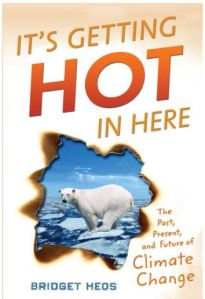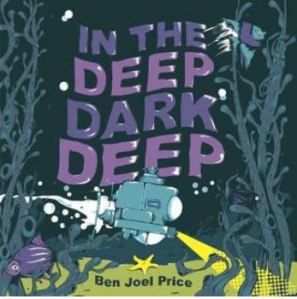Hirsch, Rebecca E. Climate Migrants: On the Move in a Warming World. Twenty-First Century Books, 2017. $35.99. ISBN 9781467793414. 88 pgs. Ages 10+. P7Q8
 Hirsch talks about some of the big concepts in climate change- the difference between weather and climate, the greenhouse effect, feedback loops, and carbon emissions. These ideas are laid out in a simple, well-organized way that will be helpful for young readers who are doing research for a report or class assignment.The book’s main focus is on the human consequences of climate change. Hirsch looks at how weather change is bringing catastrophic changes to people all over the world, from hurricanes on the south coast of the US, to villages in Alaska and islands in the South Pacific that will soon be washed away by rising sea levels, to droughts in Africa and California. She talks about these crises and how people are being forced to move their homes to be safe, and often finding a place to go is very difficult. She says that by 2050, more than 25 million people will be on the move, trying to find a place to go. This subject is very pertinent today in Trump’s America- many of the refugees and immigrants coming to this country are being pushed by natural disasters and the associated poverty and sometimes violence in their countries to find a new home elsewhere. Hirsch offers some suggestions- climate change can’t be stopped, but it can be slowed and our planet and population can be protected from some of it’s more serious effects by taking action- using less energy, recycling, restoring desert areas into “green zones,” using non-fossil fuel sources, and implementing new technologies like carbon capture methods are discussed. The text is supported with photos, graphs and charts, and there is a table of contents, glossary, source notes, and bibliography.
Hirsch talks about some of the big concepts in climate change- the difference between weather and climate, the greenhouse effect, feedback loops, and carbon emissions. These ideas are laid out in a simple, well-organized way that will be helpful for young readers who are doing research for a report or class assignment.The book’s main focus is on the human consequences of climate change. Hirsch looks at how weather change is bringing catastrophic changes to people all over the world, from hurricanes on the south coast of the US, to villages in Alaska and islands in the South Pacific that will soon be washed away by rising sea levels, to droughts in Africa and California. She talks about these crises and how people are being forced to move their homes to be safe, and often finding a place to go is very difficult. She says that by 2050, more than 25 million people will be on the move, trying to find a place to go. This subject is very pertinent today in Trump’s America- many of the refugees and immigrants coming to this country are being pushed by natural disasters and the associated poverty and sometimes violence in their countries to find a new home elsewhere. Hirsch offers some suggestions- climate change can’t be stopped, but it can be slowed and our planet and population can be protected from some of it’s more serious effects by taking action- using less energy, recycling, restoring desert areas into “green zones,” using non-fossil fuel sources, and implementing new technologies like carbon capture methods are discussed. The text is supported with photos, graphs and charts, and there is a table of contents, glossary, source notes, and bibliography.
VERDICT: I think this book would be valuable in school and public libraries. It is a great source for students who are researching climate change and learning about the growing refugee situation around the world.
March 2017 review by Carol Schramm.
 When a lake dries up, a flock of flamingos are forced to leave their babies in search of water. Elder Bibi stays with the young ones to lead them on foot across barren lands to find water and their parents. Illustrations are done in pencil shades with a bit of pink color, but it adds to the tough journey and terrain. Very striking big pages.
When a lake dries up, a flock of flamingos are forced to leave their babies in search of water. Elder Bibi stays with the young ones to lead them on foot across barren lands to find water and their parents. Illustrations are done in pencil shades with a bit of pink color, but it adds to the tough journey and terrain. Very striking big pages.





